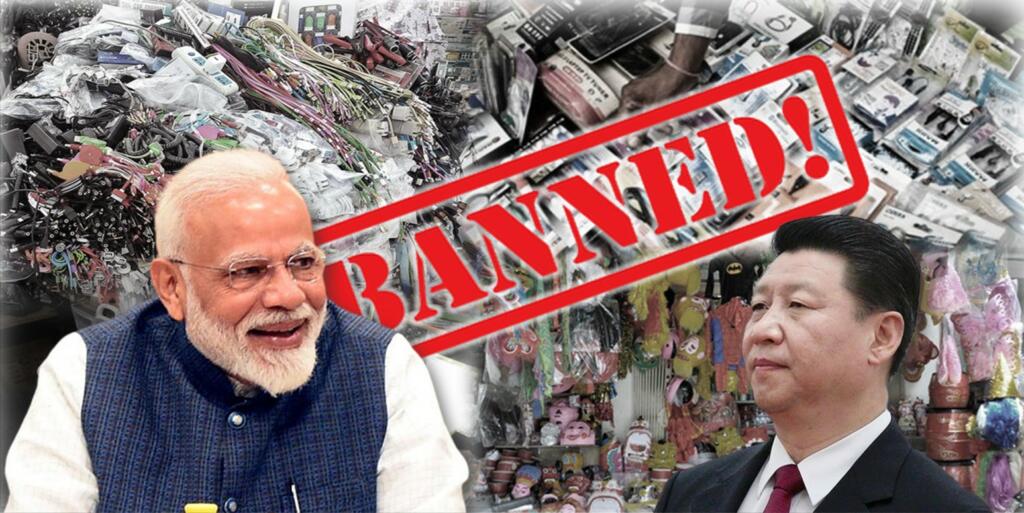Quality Control Order: India’s economic offence against China is in full swing. It seems contradictory given the fact that our trade numbers are rising. However, minute level analysis tells a whole different story. Owners of lots of Chinese products are just counting their number of days in India.
More products under Quality Control Order (QCO)
The Department of Promotion of Industry and Internal Trade (DPIIT) has launched one more round of offence against China. DPIIT is planning to bring 16 more products under the ambit of Quality Control Order (QCO).
As soon as it becomes effective, companies producing these products will have to subscribe to a higher level of quality, if they want Indian consumers to buy their products. Things under radar include air coolers, bicycles, bottled water dispensers, pumps, door fittings, cookware and utensils, electrical accessories, communication cable and water meters among others.
Asking for feedbacks and objections regarding their proposal, DPIIT statement read, “All the industry, apex industry/ associations, sectoral industry/ association, regional industry/ association, respective administrative ministries, concerned R & D institutions/ organisations are requested to furnish their comments on the draft Quality Control Order to this department by January 15.”
Also read: Import of Chinese toys and electronics: Modi government has hit the nail on the head
Complication in regulating Chinese imports
Quality control order is a politically and legally correct way to stop imports from flooding the market. This is like a slow poison to the problem of dumped imports flooding Indian markets. Most of the low-grade imports emerge from Beijing based establishments. Even when we buy those products, we are aware of their quality, but most of us still buy them.
The main reason behind it is that Chinese products win the price war with their Indian counterparts. Traditionally, China had a comparative advantage of cheap labour along with a dictatorial regime forcing every Tom, Dick and Harry in the assembly line. The labour and cost of raw materials has traditionally been so cheap that even the cost of transportation is not a hindrance to its price competitiveness.
That is how Indians ended up benefiting the Chinese regime. Now, the problem for Indian policymakers is that they can’t just put a full stop on Chinese imports. Modern multilateral trade rules designed for laissez-faire prohibit it. However, at the same time, WTO does provide for Technical Barriers to Trade (TBT). It asks its member states to ensure that technical regulations, standards and conformity assessment procedures apply to both local as well as foreign companies. In other words, India can ask foreign companies to sell the same quality of product as local companies are producing.
Also read: Rs 75,000 Crores: China’s loss during Diwali
India’s war on made-in-China products
For the last few years, India has become proactive in utilising it. Steel imports became one of the first casualties. In January 2020, the Modi government mandated BIS certification for both imported and locally made steel tubes, tubulars and other wrought steel fitting, steel tubes for structural purposes and water wells. In May that year, Quality Control Order was extended to galvanised steel sheets, carbon steel cast billet ingots, cold rolled non-oriented electrical steel sheet and strip, fire resistant steel and stainless-steel wires.
A month later, Economic Times reported that the government had eyed 5,000 technical regulations to curb imports of industrial goods, telecom products, electronics, steel and chemicals. In a phase-wise manner, these regulations were slated to be applied on 370 products. The Galwan valley clash accelerated this process. In July 2020, the then Consumers Affairs Minister Ram Vilas Paswan informed that 368 products were already under Quality Control Order while 239 others were in the pipeline. Later, it got more product types under its grip, including leather.
Also read: There is an imminent need to de hyphenate steel and China
Soon, the public itself started to boycott Chinese products. It had its impact on the Indo-China trade basket as well. Now, import of finished Chinese products is declining while that of raw materials is increasing. Side-by-side, the government has also ramped up its efforts. Last month, it was reported that 50 more products have been chosen for strict regulation by the end of the second quarter of FY 2023-24.
The steps are commendable and are ensuring a level playing ground between Indian and Chinese products. The final result is yet to be seen, though the beginning is commendable.
Support TFI:
Support us to strengthen the ‘Right’ ideology of cultural nationalism by purchasing the best quality garments from TFI-STORE.COM
